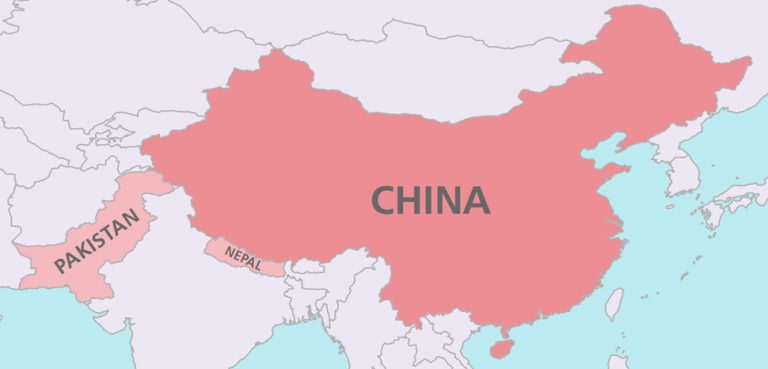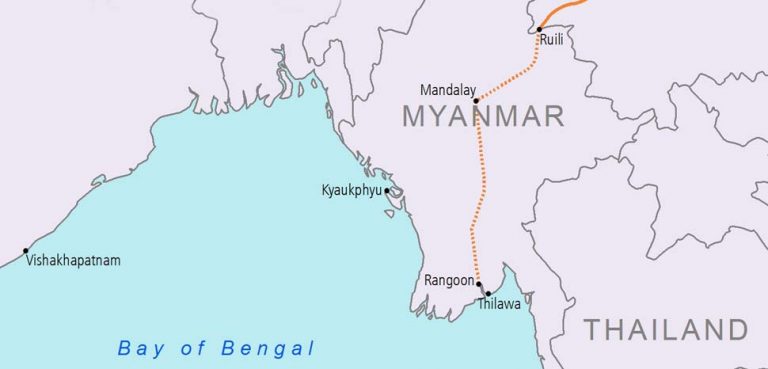In recent decades, the portrayal of the five former Soviet Central Asian states—collectively known as the “stans”—in Western media and policy discourse has often been overly simplistic, neglecting their unique identities, historical legacies, and rich cultural diversity. These nations are frequently depicted as objects in a larger geopolitical contest, marginalized as a “backwater” or dismissed as mere transit zones connecting more “advanced” civilizations. This reductionist view not only overlooks the significant achievements and contributions of the Central Asian peoples but also perpetuates stereotypes, casting the region as stagnant and underdeveloped.
A lynchpin of trade and geopolitics
Contrary to the oversimplified portrayal, Central Asia is a region steeped in history, having once flourished as a vibrant hub of international interaction. American scholar Frederick S. Starr underscores that the area was the epicenter of civilization, profoundly influencing the trajectories of European, Middle Eastern, and Asian societies, including those of China and India. Between the 9th and 13th centuries, Central Asia experienced a golden era, emerging as a key player in global commerce and economic development. It also led the way in various fields, such as mathematics, geometry, astronomy, philosophy, and epistemology. These innovations were instrumental in laying the groundwork for the European Renaissance, underscoring the profound historical significance of Central Asia in shaping global trade routes.
A century ago, the renowned British geographer Halford Mackinder, widely regarded as the pioneer of modern geopolitics, pondered the great significance of Eurasia in geographical terms. He identified this expansive region as the central focal point of global politics. Mackinder envisioned a rail network connecting the historically landlocked and horseback-traveled expanse. Regrettably, his vision was disrupted by the chaotic outbreak of World War I. This disturbance stopped the advancement of rail systems in Eurasia and obstructed broader global collaboration. Today, Mackinder’s observations are once again becoming pertinent. Thanks to its strategic geo-economic and geopolitical position, Central Asia is resurfacing as a crucial junction of the Eurasian supercontinent, bridging the gap between the West and the East and the North and the South, underscoring the urgent need to recognize its potential.
BRI and the Middle Corridor
Central Asia stands at the forefront of China’s Belt and Road Initiative (BRI), a monumental $1 trillion infrastructure development endeavor lauded by Chinese President Xi Jinping as the “project of the century.” Since its inception in 2013, Beijing has channeled a substantial $136 billion into erecting import-export hubs, fortifying energy supply grids, and enhancing digital interconnectivity throughout the region under the BRI framework. At the same time, with recent global trends and geopolitical shifts – including the imposition of sanctions and the second invasion of Ukraine, Moscow has pushed the 7,200-kilometer International North-South Transport Corridor, one of the three paths that connects Russia’s St. Petersburg to India’s Mumbai through Central Asia.
Amidst Russia’s second invasion of Ukraine in February 2022, global attention swiftly turned to the Trans-Caspian International Transport Route (“Middle Corridor”) as a promising alternate trade route linking eastern and western Eurasia. This corridor traverses the Central Asian region, the Caspian Sea, and the Caucasus Mountains. Despite being the most direct path, several obstacles, encompassing issues like infrastructure constraints, bureaucratic challenges, and political barriers, have impeded its progress compared to other trade routes in Eurasia, such as Russia’s Trans-Siberian Railway (“Northern Corridor”) and sea routes through the Indian Ocean (“Southern Corridor”).
In late January 2024, the Global Gateway Investors Forum in Brussels marked a significant turning point as international political support for the Middle Corridor culminated in substantial financial commitments. European and international financial institutions pledged €10 billion (approximately $10.8 billion) to enhance the corridor’s infrastructure, aiming to facilitate connections between Europe and Central Asia in 15 days or less – an ambitious testament to the project’s potential. In a notable development, the United States participated in the forum for the first time, represented by Nicholas Berliner, the Special Assistant to the President and Senior Director for Russia and Central Asia. This participation highlighted President Biden’s commitment to fostering investments and promoting the development of the Middle Corridor through the Partnership for Global Infrastructure and Investment, instilling a sense of optimism about the corridor’s future.
The strategic significance of the Middle Corridor has only grown amidst recent geopolitical uncertainties that have threatened traditional maritime trade paths via the Indian Ocean. Since November 2023, the Red Sea has experienced continuous attacks on merchant shipping by the Houthis, with American and British strikes on Yemen further aggravating the situation. These incidents have significantly disrupted the flow of goods through the Suez Canal, a crucial conduit for 10% of global trade, forcing shippers to detour around Africa’s Cape of Good Hope. This detour adds an additional 10-14 days to the usual 20-30 day journey. In this context, the Middle Corridor emerges as a reliable and stable alternative for trade, highlighting its potential in the global trade landscape.
Central Asian countries, amid a shifting geopolitical landscape, have emerged as proactive leaders. They are taking significant steps to extend supply chains across Eurasia’s Heartland. In October 2023, Uzbekistan spearheaded discussions with Kazakhstan, Turkmenistan, Turkey, and other nations to accelerate the development of the Middle Corridor’s secondary route, known as the ‘Turkmenistan-Uzbekistan route.’ Moreover, during a two-day state visit to Beijing in late January 2024, Uzbek President Shavkat Mirziyayev secured China’s backing to commence the construction of the China-Kyrgyzstan-Uzbekistan railway, which was finalized on June 6. Once operational, this railway is expected to significantly reduce transit times and costs, thereby enhancing the competitiveness of the Central Asian trade route.
Since 2016, Uzbekistan has advocated for the swift development of the Trans-Afghan Transport Corridor, which aims to connect Central Asia with the Persian Gulf and the Indian Ocean. This would reinforce the region’s critical role in the trade networks of what Mackinder termed the ‘world island.’ These proactive approaches increasingly reshaped the region’s geopolitical dynamics and invited active participation.
A prize for imperial powers
Thirty years ago, former U.S. National Security Advisor Zbigniew Brzezinski highlighted Central Asia as a geopolitical chessboard where the struggle for global dominance continues. Amid increasing economic tensions, geopolitical fears, and widespread mistrust, the competition over this region has sharpened. China, leveraging the BRI, has sought to integrate Central Asian nations into the Beijing-led “Community of Common Destiny.” This vision, often seen as a challenge to the current international order, is based on the idea of a shared future for humanity, where a bloc of nations become economically dependent on China, thereby inclined to comply with Chinese political demands.
Conversely, Russia has sought to reassert its influence, if not outright dominion, over the regional countries through economic and security alliances. President Vladimir Putin and many other Russians perceive Central Asia as Moscow’s “near abroad,” a natural sphere of influence that became politically separate from Moscow due to the accidental collapse of the Soviet Union. Meanwhile, before the Taliban’s resurgence, the United States primarily engaged with the region through its Afghan policy, aiming to establish neoliberal frameworks that champion democracy and free markets. All these great powers, employing the strategic principle of “divide et impera,” have attempted to lure regional countries with cooperation incentives while denying these benefits to those who resist alignment. As a result, a complex web of alliances and rivalries has emerged in Central Asia, with each country charting its course amidst the conflicting interests of external powers.
The solution: Central Asian regionalism
However, recent global trends and geopolitical developments – including the shambolic withdrawal of US forces from Afghanistan, the unchecked rise of Chinese influence in the region, and, more recently, Russia’s neo-colonial war in Ukraine – have prompted Central Asian nations to seek greater regional cooperation and unity. This unity, far from being a mere aspiration, is now deemed essential for the region to avoid being relegated to mere pawns in the strategic maneuvers of great powers, thereby ensuring they assert their agency and sovereignty in a complex geopolitical landscape.
Uzbekistan, the most populous nation in Central Asia, stands at the forefront of the region’s renewed regional cooperation. Recognized by American political scientist Alexander Cooley as the traditional heart of Central Asian power, Uzbekistan holds a pivotal position, sharing borders with all regional countries and Afghanistan. Since President Shavkat Mirziyoyev assumed office in 2016, the government has embarked on an unprecedented reform program that aimed to boost socio-economic growth, improve administrative governance, strengthen civil society, address human rights concerns, and foster a civic culture befitting the country’s path as a secular, modernizing and forward-looking regional power. These reforms have not only rejuvenated Uzbekistan domestically but also set a benchmark for regional cooperation, instilling confidence in the region’s potential.
Central to Uzbekistan’s transformation has been a strategic shift in foreign policy towards a pragmatic approach of “good neighborliness.” In its commitment to the principles of mutual respect, non-interference, and cooperation, Tashkent has demonstrated unprecedented flexibility, making substantial compromises to resolve issues such as border demarcation and water usage that had previously hindered collaboration. This successful diplomatic stance, guided by strong political will and lessons learned from the recent past, has dispelled the lingering shadows of past conflicts and disputes, fostering regional collaboration and stability.
Since 2016, Central Asia has experienced a significant surge in economic collaboration. Intraregional trade has more than doubled, and mutual investment volume has nearly sextupled, demonstrating a growing economic interdependence and confidence in the region’s prospects. This trend is further underscored by the significant increase in regional investments, which have almost doubled to an impressive $40 billion. Simultaneously, intraregional tourism has nearly doubled, highlighting the region’s increasing attractiveness.
Amidst pervasive mistrust and unpredictable crises, Central Asia has seen a surge of positive developments that have significantly increased its importance in Eurasia. Notably, Iran and Azerbaijan have reevaluated their strategies towards Central Asia, shifting their focus towards engaging with regional countries. Equally significant is the proliferation of ‘Central Asia Plus’ platforms, now numbering 11. These platforms, which are multilateral dialogue mechanisms involving Central Asian countries and major regional and global powers, play a crucial role in fostering broader and more diverse international relationships. They also aim to promote economic development and enhance regional security in Central Asia, reflecting the region’s potential to become a unified international subject and a hopeful sign of its positive future.
Mackinder’s theory that Eurasia serves as the ‘geographical pivot of history’ and that control over its heartlands meant control over the world remains relevant today. To avoid being mere pawns in great power struggles and enhance their strategic autonomy, Central Asian countries should strive toward regionalism. Achieving this requires committing to consolidating regional unity through comprehensive mechanisms and institutions. Uzbekistan and Kazakhstan, as key players in the region due to their large populations, significant economies, and geopolitical importance, should follow the example of France and Germany in European integration by collaborating to transform the region into a unified player in international economics and politics, shedding the contest mindset ingrained during the Soviet era.
Furthermore, countries in the region must strive for a vision of ‘free and open’ Central Asia to ensure further development. They should engage with major powers cautiously and constructively, understanding the crucial importance of strategic diplomacy in balancing their international relations through diversification. This includes strengthening ties with the European Union and the United States, which have identified Central Asian unity as a strategic goal, as well as with countries in South Asia and the Gulf region. Equally important is the establishment of a common regional identity. By emphasizing their shared history, religion, culture, and worldview, Central Asian countries can bolster the resilience and durability of regional unity.
In today’s evolving world order, Central Asians face a critical historical moment. They stand at a crossroads where they can either become subjects in their own right or be absorbed into the sphere of great powers. If they succeed, they will determine their destiny and assert their sovereignty over the Heartland, reclaiming their historical position in Eurasia, akin to its golden age.
Mirshohid Aslanov is the co-founder and CEO of the Center for Progressive Reforms (NGO) in Tashkent, Uzbekistan.
Alouddin Komilov is the chief research fellow at the Center for Progressive Reforms in Tashkent, Uzbekistan.




